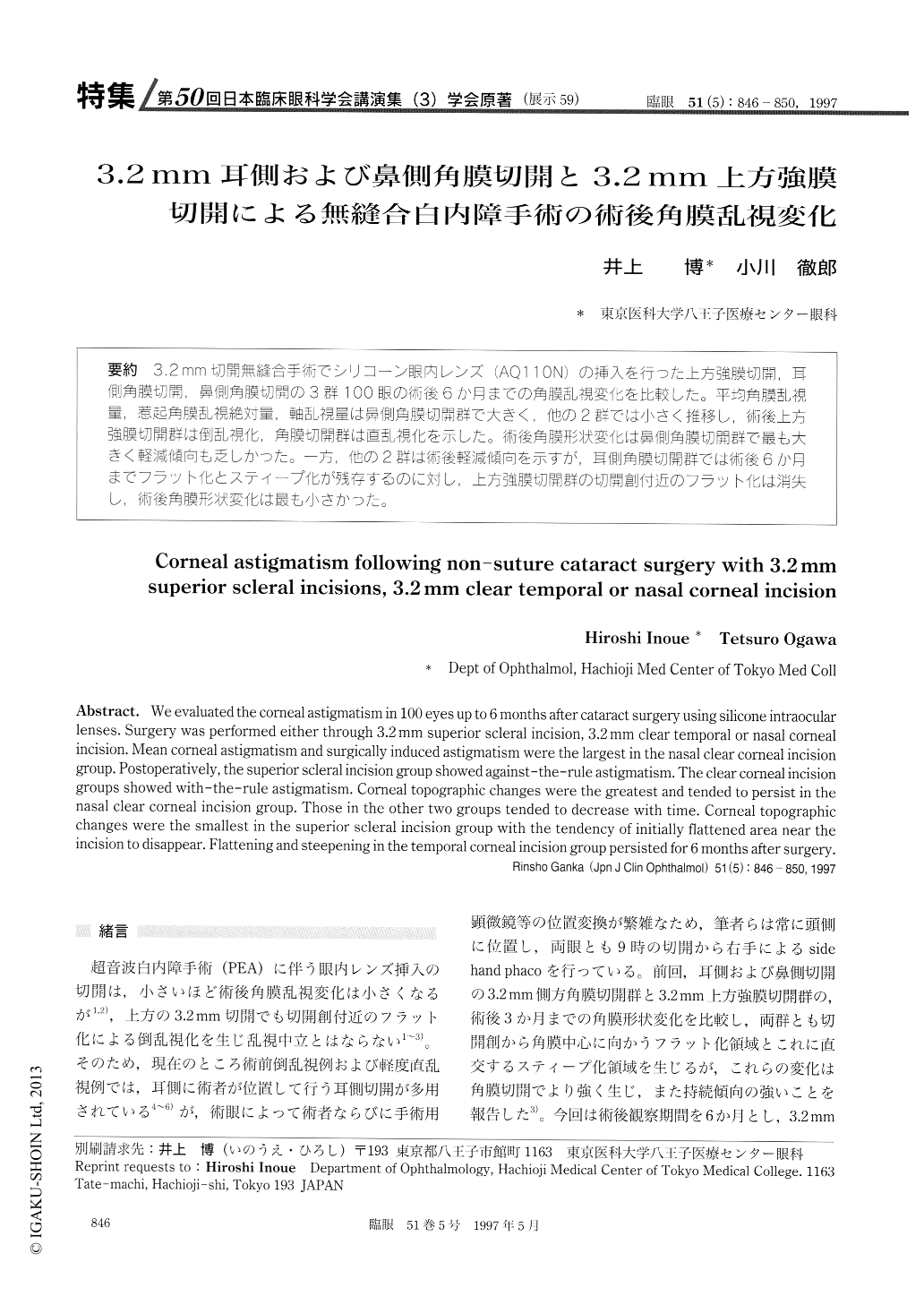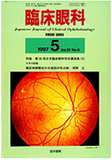Japanese
English
- 有料閲覧
- Abstract 文献概要
- 1ページ目 Look Inside
(展示59) 3.2mm切開無縫合手術でシリコーン眼内レンズ(AQ110N)の挿入を行った上方強膜切開,耳側角膜切開,鼻側角膜切開の3群100眼の術後6か月までの角膜乱視変化を比較した。平均角膜乱視量,惹起角膜乱視絶対量,軸乱視量は鼻側角膜切開群で大きく,他の2群では小さく推移し,術後上方強膜切開群は倒乱視化,角膜切開群は直乱視化を示した。術後角膜形状変化は鼻側角膜切開群で最も大きく軽減傾向も乏しかった。一方,他の2群は術後軽減傾向を示すが,耳側角膜切開群では術後6か月までフラット化とスティープ化が残存するのに対し,上方強膜切開群の切開創付近のフラット化は消失し,術後角膜形状変化は最も小さかった。
We evaluated the corneal astigmatism in 100 eyes up to 6 months after cataract surgery using silicone intraocular lenses. Surgery was performed either through 3.2 mm superior scleral incision, 3.2 mm clear temporal or nasal corneal incision. Mean corneal astigmatism and surgically induced astigmatism were the largest in the nasal clear corneal incision group. Postoperatively, the superior sclera] incision group showed against-the-rule astigmatism. The clear corneal incision groups showed with-the-rule astigmatism. Corneal topographic changes were the greatest and tended to persist in the nasal clear corneal incision group. Those in the other two groups tended to decrease with time. Corneal topographic changes were the smallest in the superior scleral incision group with the tendency of initially flattened area near the incision to disappear. Flattening and steepening in the temporal corneal incision group persisted for 6 months after surgery.

Copyright © 1997, Igaku-Shoin Ltd. All rights reserved.


